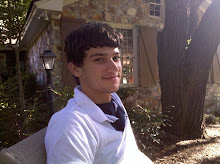So, my motivation to learn how to use subversion is quite strong. I just wish it was introduced to me earlier. I have downloaded a subversion client (tortoisesvn) and have begun to play around with it using Dr. Bowring's subversion server. Initially I attempted to use the GUI but I found it to be limiting. (Uh oh, I'm starting to sound like a know it all, command line user!) Using the GUI, I was able to add files to the repository but I quickly decided that I would prefer the command line. Using the command line version, I quickly got a feel for the commands using the 'svn help' command. I successfully checked out files from the repository and ran through a list of commands on the 'svn help' page (updating from the repository, committing changes, etc.). The process has been pretty smooth and I'm excited to finally be getting this technology under my belt.
Ill point out two problems I had and the solutions I found to those problems in case anyone else in my class encounters this.
Problem One
From the windows command line, I originally tried to commit changes using the command 'svn commit' this gave me the following error
svn: Commit failed (details follow):
svn: Could not use external editor to fetch log message; consider setting the $SVN_EDITOR environment variable or using the --message (-m) or --file (-F) options svn: None of the environment variables
SVN_EDITOR, VISUAL or EDITOR is set, and no 'editor-cmd' run-time configuration option was found
Apparently a fix to this is to include a message with your commit using the -m
option. For example..
svn commit -m "added to the genetic algorithm"
Problem twoIf you attempt an svn command such as 'svn commit' and you get an error that reads "svn: C:\Users\Name\ is not a working copy" then you are not in the correct
directory. You need to 'cd' into the directory you have checked out.
